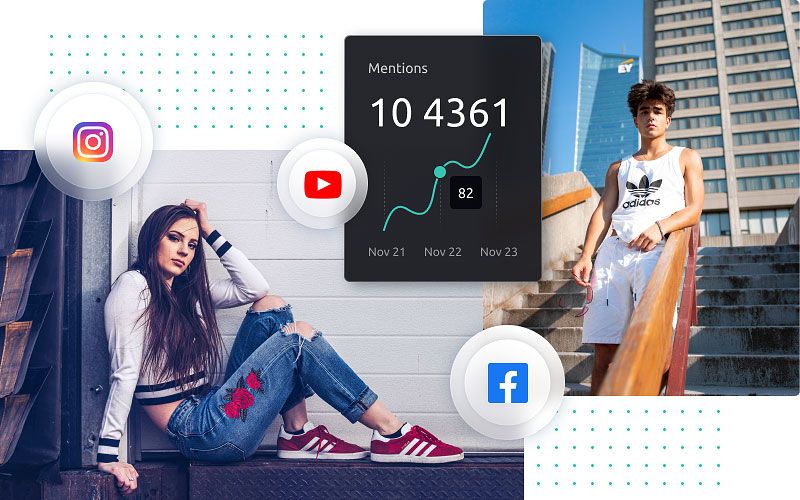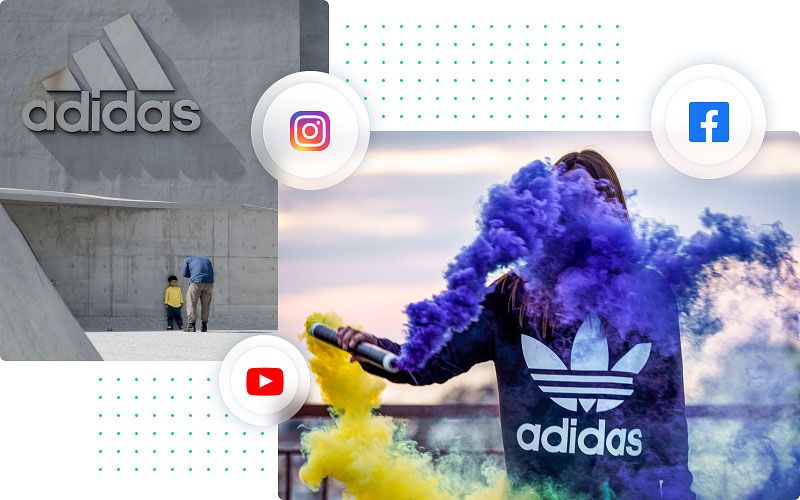Every day, more than 1.8 billion images are uploaded to the internet. Photos and visual effects are rapidly taking over online media and social networks. From celebrity selfies to brand-generated user content, images are prevalent on platforms like Instagram, Twitter, Facebook, and more. New features on social networks, such as the ability to respond with images to posts on Facebook or Instagram, are further fueling this trend.
Using images offers several advantages, as they not only convey more information, emotions, and meanings but are also easier to digest compared to text. As the volume of images continues to grow, it's crucial to monitor how your brand is visually represented in the online and social media environment, as well as the associations it evokes. Research shows that approximately 80% of photos with logos do not contain brand mentions in the accompanying text. Without analyzing them, significant amounts of information are missed. By implementing image recognition, brands can significantly improve their marketing strategy.

For a brand, it's important to have a clear understanding of how the company is mentioned by consumers. Negative sentiments or dissatisfaction may indicate that it's time to change the information policy. Conversely, a lot of positive reactions to a brand's visual content can mean that your marketing team is doing well. We analyzed the percentage of images containing mentions of sports brands like Adidas, Nike, and Reebok, which go unnoticed without image recognition but make up 78%.
Until now, monitoring has mainly focused on textual content, such as text in tweets or blog posts. Visual analytics takes the next step and allows for tracking logos in images and photos posted on social media and the internet.

Let's consider a few examples of how image recognition can provide brands with more information:
1. User-Generated Content (UGC): User-generated content can enhance almost any digital marketing strategy. According to Salesforce, using UGC can increase engagement in marketing campaigns by 50% and boost conversion rates by 10%. User-generated content is a great addition to marketing strategies because customers find such sources more reliable than information on official brand resources. By using image recognition, you can identify the authors of popular visual posts, potentially leading to collaborations. Many brands actively use user-generated content in their marketing efforts, often without users even realizing it.
2. Protect Your Brand from Misuse: Having a large number of images makes it challenging to analyze how your logo is being used online. Image recognition allows you to detect fraudulent activities and logo manipulations that could harm your business, enabling you to respond promptly. Visual analytics can even detect minor changes in logos, helping companies monitor content that violates copyright.
3. Gain Insights into Sponsorship ROI: Many companies are interested in tracking sponsorship and assessing the return on investment (ROI). At various events, from fashion shows to Formula 1 races, a brand's logo may be prominently displayed without explicit brand mentions in articles or posts. By using image recognition, brands can measure the number of visual mentions they receive and consider this data when determining the value of their sponsorship activities.
These are just some of the possibilities that image recognition offers to companies. You can track what your competitors are doing in the market, find Instagram posts that don't use hashtags, or learn about your customers' experiences. Image recognition can benefit various departments, from marketing and PR to legal departments or customer service.
We recommend reading several articles on image analysis to learn more.
1. Now Artificial Intelligence Analyzes Images: Potential Impact on Business
As noted in this article, the interest in "computer vision" extends beyond marketing departments. A brief overview of the research on the prospects of visual analytics from Google and Stanford.
2.Why Marketers Need Image Recognition Technology?
Learn how internet giants Pinterest, Instagram, Alibaba use images and experiment with image recognition.
3. Image Recognition: The Next Level of Search
Shelly Kramer provides a brief introduction to image recognition technology. Everything you need to know about the basics and prospects of this field.
4. How Image Recognition Can Help Promote Your Brand on Social Media
"Adweek" discusses the importance of tracking how your brand is visually represented and using user-generated content on social media for marketing.
